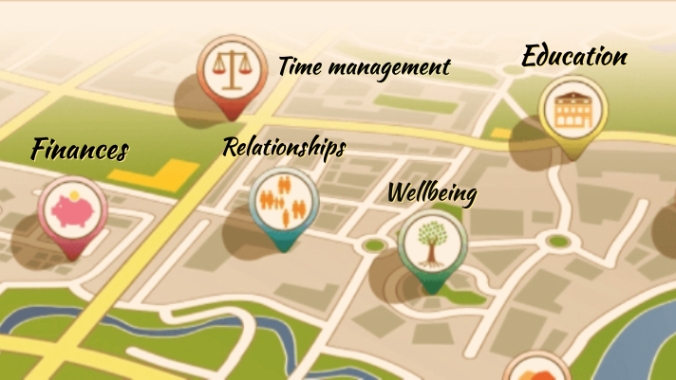
As a business owner, as somebody who runs my own show, what’s it like in my world?
Well…
It’s a life that carries both the weightlessness of personal freedom AND the burden of personal responsibility every single day. Like take right now for instance-
Nobody’s making me write this. If I wanted, I could take the rest of the afternoon off and go down the rabbit hole of YouTube. I could go for a walk. Or I could bring forward tonights’ planned gym session by a few hours.
I have nobody to report to, and I’m free. Yet (to paraphrase Uncle Ben from ‘Spiderman’), with great freedom comes great responsibility. That’s how it is when you’re a business owner or a professional at your craft- you’re stuck in that ongoing battle of “What needs to be done now?” vs “What can I get to, later?”
Over time, I’ve learned something:
A great week is a planned week.
I’m sure you’ve got a schedule or an organiser of some sort- and I imagine you probably fill this in, mostly with the ‘To Do’s’ and important tasks that relate to your profession and your finances. I’m not here to talk specifically about those. What I want to talk about are the other areas that so many people aren’t itemising- and if they did, they’d discover not only would they enjoy their week more- but they’d become more productive. All this would (in turn) have a positive flow-on effect to their work and their wealth.
So, you want to discover how this is done?
I’m assuming (like most people) you said yes- so here it is:
First of all, I suggest you get rid of your ‘To Do’ list and transform it into a weekly planner. There’s a difference between the two of them. Let me explain:
I first got the idea for keeping a weekly planner after listening through the Tony Robbins 10-Part series ‘Time Of Your Life’– and I highly recommend it so you get a thorough understanding of how to craft your weekly planner and how it ties in with your ultimate goals and aspirations. It follows the principles of living a life of ‘One Putt Foward’, which I discussed here:
Revealed: The Success Formula That’s Made In Japan…
I won’t get bogged down with all the details here, but for over 5 years now, each Monday I sit down with my laptop (wherever I am) and organise the week ahead of me. Sure, all the career and financially-related ‘To Do’s are itemised- but it’s much more than that. I also set goals designed to improve my physical state, my relationships, further explore my interests and those other things that make life a more complete experience. So in my weekly planner, besides the Career and Financial goals, I also have items listed under the following categories:
Physical
Emotional
Spiritual
Family
Relationships
Interests
Setting it out like this sets up a week where I’m not just getting the important stuff done- but I’m getting real fulfilment personally, as well. Now, if you go ahead and put together your own planner, you might want to ad other categories- but the most important principle that should back it up is this:
Get the work done, get your affairs taken care of- but appreciate your life for each day that comes, too- and have some fun.
There are online programs like Trello that you can use for this (although personally, I can achieve the result using just a simple Word document)- but the most important thing is to get your weekly planner up and running.
In tandem with approaching life by the principle of that little putt forward every day, you discover a new level of enjoyment from life- and this (best of all) leads to a sharper mind, better health, a better work ethic, better results- and better value for the work you put in- and what’s not to love about that?
So throw out that beige ‘To Do’ list- get your weekly planner set up- and ad some colour to your life!


